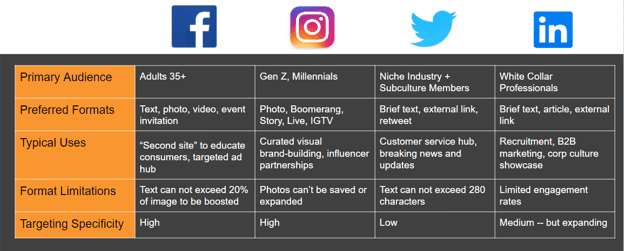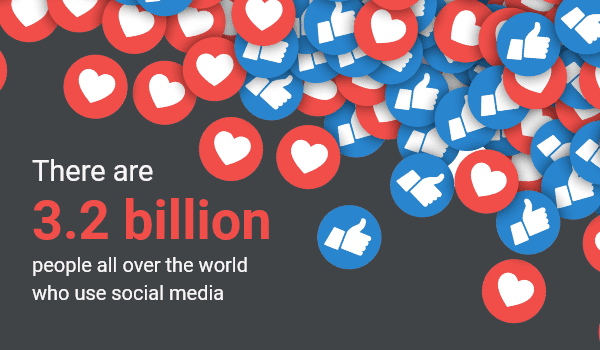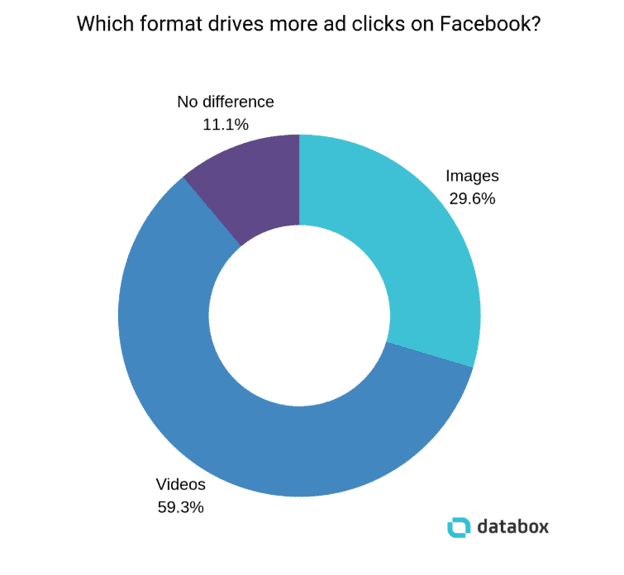“Content is king.”
Digital marketers have heard and repeated this refrain for years, convincing their clients that they need to do more in the ways of content to get in front of the right eyeballs. Write a blog. Make a social post. Hell, shoot a video about the company. Reach, engage, impress, convert. The ones who implore you that “content is king” aren’t wrong — but there’s another piece to that puzzle. How your business comes across on digital platforms is the culmination of what you say, how you say it, the type of visuals you use, and where you talk to your audience.
When you put the mantra of “content is king” under a microscope, you’ll find that it is great content that should be deemed worthy of royalty. Effective content marketing — what your company sounds like, what type of content you produce, where you reach your audience, and what you say — must all work in concert together.
Establish the Style and Tone for Your Company
When our creative team develops a relationship with a client to establish their brand, one of our first questions is often: what are your style and tone? Meaning, what do you write and how do you write it? For most people, the differences between style and tone are lost among our foggy memories of senior English class when Mrs. Sniderman asked you a question about what happened in our first reading assignment of The Picture of Dorian Gray in front of the entire class and wasn’t amused when you said “He was just taking a demonic selfie”. (No? Just me?)
Style is how you write something. That could mean that you write short, punchy sentences, no matter the content. Not to flex on you, but think of how Ernest Hemingway writes. Before him, authors would weave word webs that whisk you away to worlds of wonder and fancy, defying your every notion of reality and truth; albeit the discoveries unearthed in these long sentences would strike at something in your core, and arouse within you a refreshed understanding unparalleled to anything you’ve experienced before. See what I mean? Hemingway could write the same thing in a fraction of the time.
Figure out if your brand is the kind of brand that would ever use semicolons, em-dashes, or exclamation points. Do you use complex words or simpler words? These elements of style (paging White and Strunk) should be examined closely.
The tone is the attitude of the piece. For example, if your brand has a humorous voice, then your tone could be sarcastic, pun-filled, edgy, or any number of humor types. An important matter of business is to consider which tone matches your brand. If you’re a B2B brand that is more academic, then your latest article or whitepaper might not be served by a sarcastic tone.
To ensure synergistic writing across your platforms and channels, each brand should develop a comprehensive Brand Style Guide that includes how copy and content writers will convey your brand message.
Choose the Right Channels to Reach Your Audience
A crucial piece to the puzzle is where you will share your content. The abundance of content marketing channels may be difficult to traverse, but if you know what you will be talking about as a brand and who your audience is, the choice will become much clearer.

The chart above is a condensed yet helpful tool to understand the audiences and formats of the top social media platforms: Facebook, Instagram, Twitter, and LinkedIn. Figure out which social platforms can best serve your creative message. For instance, a financial institution with a more B2B audience might consider Facebook, LinkedIn, and Twitter but forego Instagram. However, a fast-moving consumer goods brand that wants to posture itself as a hip brand might make Instagram their priority social platform.

Part of the job of any marketer is to push your content to where the eyeballs are, and if social media isn’t a part of your plan then your holistic, omni-channel endeavors could fall short.

Long-form written content is a staple in the content marketing arsenal. A well-written blog or article allows you to expand upon your expertise or to communicate with your audience that you are an authority on the topics that are relevant to your brand. Expertise, authority, and trustworthiness, otherwise known as E-A-T in the SEO world, has been pushed massively by Google since their updates last year. Lily Ray, our SEO Director, has done much to get the word out to brands and marketers that E-A-T principles are a necessity for your content.
Video Content
Product videos, social videos, original content…the sheer amount of video content that exists on the internet could fill literal centuries of non-stop entertainment. There isn’t a demographic that video doesn’t touch — Facebook, Instagram, YouTube and streaming platforms all boast the prominence of video content. 64% of consumers say watching a video on Facebook has influenced them into a purchasing decision within the last month at the time of the Animoto survey. Furthermore, there are 1.9 billion active users on YouTube, which creates a massive, almost imperceptible opportunity for marketers to get their message in front of viewers.
The trick is to make compelling video content — a video that might explain your product in an interesting way, garner an empathetic reaction, or elevate your brand using impeccable cinematic language. You don’t need famous Hollywood talent like Spike Jonez to direct your spots (although, that couldn’t hurt). No matter your budget, video content is superior compared to static images and text when it concerns clicks and engagement. Databox asked marketers about the performance of Facebook Ads, pitting videos against images.

Video content goes back to what kind of creative output your brand seeks to achieve. If your written copy on your website, ads, or social media posts are more authoritative then you might not want to produce video content that is comedic, sarcastic, silly, or filled with non-sequiturs. Unless you think it’s a good idea to juxtapose those two voices to make a larger point about your brand and industry… But let’s not get too in the weeds.
Traditional Channels
What did we ever do before the internet to market ourselves? Several channels are now seen as more traditional yet still pertinent. Traditional channels include direct mail, billboards, radio ads, TV commercials — and we should remind ourselves that some of those may not be “traditional” in certain circles, but an argument could be made that we’re in the middle of a tectonic shift in the marketing landscape as digital looms larger each year.
Our partnership with SourceLink expands the methods in which we can create data-driven, ROI-focused digital marketing solutions. The reason why it’s such a potent partnership is that SourceLink brings vast experience with omni-channel marketing that synergizes with our success in SEO, PPC, and — now — creative content marketing.
Your marketing goals should always be top-of-mind when choosing which platforms or methodologies you will use to get your message out into the world. After you’ve chosen the channels, it’s time to create.
Create a Holistic Content Strategy
One of the most important aspects of omni-channel, holistic content is for everyone involved in the creation of the content to be aligned on the goals, deliverables, and vision. There are steps that your brand can take to ensure that these mechanisms are all working in sync with each other and that everyone is on board.
- Develop a content brief. Produce a document that lays out the main goals of your campaign, ongoing content strategy, or full re-brand. Goals may include higher social engagement, targeting a specific demographic to broaden sales, conversions, and other impressive metrics. A content brief may also include general branding notes such as voice and style.
- Create a branding style guide. Your branding style guide should be heralded as a religious text within your company and the digital marketing specialists with whom you collaborate. Expound upon your brand’s voice and style by providing examples of content and key differentiators between you and your competitors. To complement the writing guidelines, make sure that your visual guidelines are included. Color hex codes, types of photography, visual inspirations, dimensions — anything you can think of, put it on the pizza (that joke is specifically for all those Mary-Kate and Ashley fans).
- Understand your audience. This isn’t a novel concept, but it’s worth emphasizing. You cannot meet your audience where they are with the type of content they want to engage with unless you know them. We’re talking a deep, intuitive knowledge. It will require ample amounts of research, testing, and internal discussion, but it’s worth the effort.
- Have content creation systems in place. Nothing is more inhibiting than the absence of systems. Preparation is a key tenet to this entire process because intentional content has a better chance of thriving if you’re disciplined. Our content teams create social media calendars, source images, schedule original photography, and produce video content well in advance before it’s scheduled to be published. Posting on a personal social channel is substantially different than developing creative for a brand.
- Be adaptable to the ebbs and flows of content creation. After you’ve made this deliberate push for incredible content, track the metrics that come along with it. Did your engagements go down? Was there a massive uptick in your search results? Or did a targeted ad not perform as well? Don’t be disheartened. Be light on your feet. The bedrock of your branding, if you put in the work beforehand, will steady you as you craft more content to be relevant for your audiences at the moment of discovery.
The Art of Content Marketing
Numbers are useful. Quantitative data can inform us of a variety of things. Creativity — the ability to engage a person at several milestones of their customer journey — is critical to omni-channel marketing. Sharpness of the pen can be enough to convert a person to be a customer for life. A brilliant video piece can be tracked as X% increase in engagements, which led to X% increase in conversions; therefore, a companion blog article sprouts from the same garden of ideas and that drives more traffic to the video and leads to even more conversions.
It’s synergy. It’s right brain and left brain working in concert with each other to create complex, multi-faceted successes. Our creative team informs the SEO, PPC, and digital media capabilities, and they inform the creative team. On and on — that critical, data-driven, creative loop is how we build brands.
Reach out today to find out what we can create together that will make an impact on your audience.






